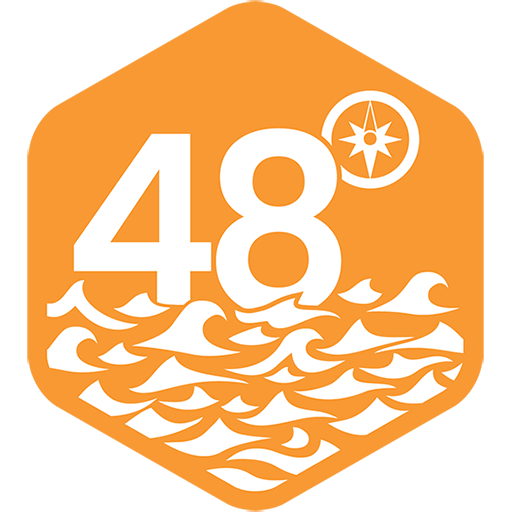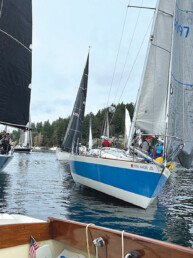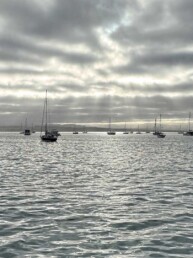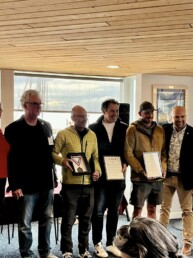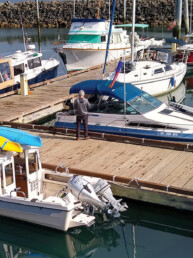Here’s our latest destinations installment courtesy of SalishSeaPilot.com‘s Jim Burgoyne about choosing a window to transit Hecate Strait toward Haida Gwaii.
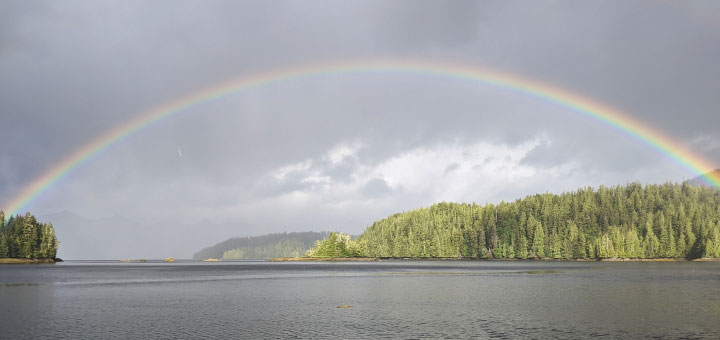
Perhaps the question most often asked by other sailors about our cruise to Haida Gwaii this year went something like this: From where did you set off and where did you make landfall on your two crossings of Hecate Strait.
Before leaving for Haida Gwaii we did not spend much time thinking about it. I thought we would just sail to a convenient spot up the coast, jumping across on an overnight sail when wind and seas were right. That would give us ample time to arrive in daylight no matter our route or landfall.
Unhurried. Simple, right?
Some sailors opt to leave from south of Cape Caution, making a 140-150nm overnight voyage from Bull Harbour or Clam Cove, or other anchorages near the entrance to Queen Charlotte Strait, to Cape St. James at the southern tip of Haida Gwaii.
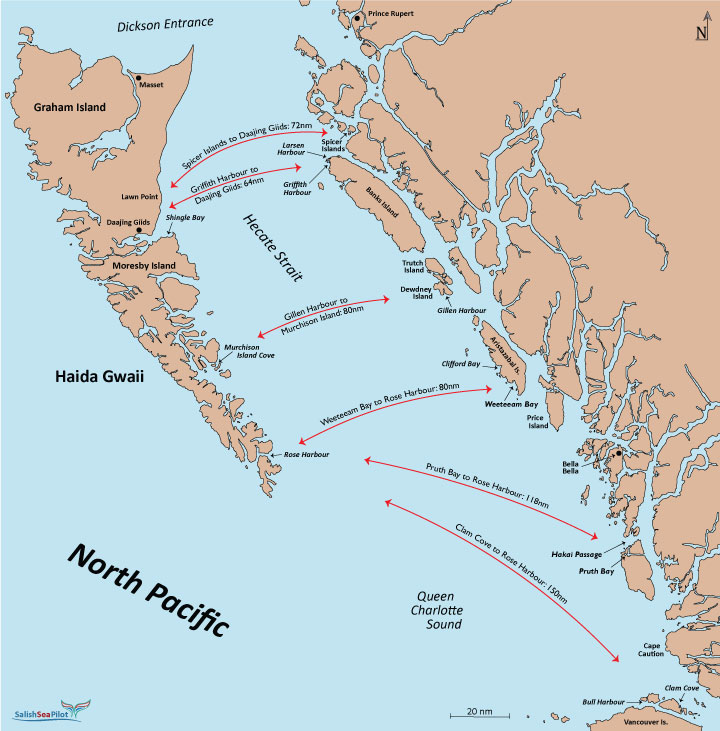 Others make the leap from just north of Cape Caution, from anchorages near Hakai Passage. From here it is still more than 110nm to Rose Harbour at the bottom end of Gwaii Haanas National Park. Unless your vessel can sail or power at speeds in the vicinity of eight knots you are also looking at crossing for some hours in darkness.
Others make the leap from just north of Cape Caution, from anchorages near Hakai Passage. From here it is still more than 110nm to Rose Harbour at the bottom end of Gwaii Haanas National Park. Unless your vessel can sail or power at speeds in the vicinity of eight knots you are also looking at crossing for some hours in darkness.
Most of the rest of us will cross from one of the anchorages along the western shores of four islands, from Aristazabal in the south to Dewdney, Trutch and Banks in the north near Prince Rupert.
The crossing distances from these islands vary considerably, depending on your ultimate destination. From Griffith Harbour at the north end of Banks Island, it is about 55nm to Shingle Bay near the entrance to Skidegate Inlet and a further 10nm to the small craft harbour in Daajing Giids (formerly Queen Charlotte City).
From Weeteeam Bay, at the southwest corner of Aristazabal Island, it is 80nm to Rose Harbour. From Dewdney Island’s Gillen Harbour, roughly halfway between Griffith Harbour and Weeteeam Bay, it is also about 80nm to the popular anchorage at Murchison Island Cove, near Haida Gwaii’s famous Hotspring Island.
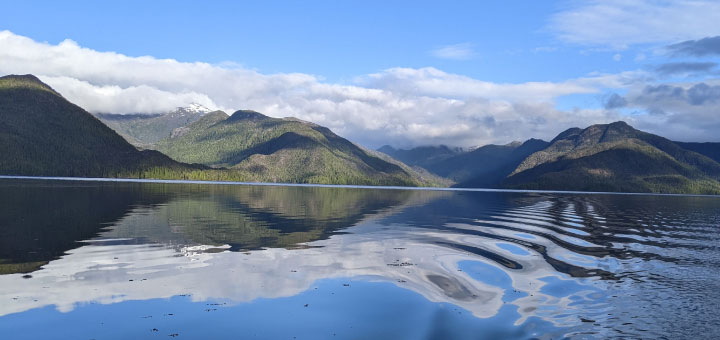
There are many other good jumping off points on the mainland side, both close to Prince Albert and farther south, their suitability depending on weather and your Haida Gwaii destination.
Up around the northern tip of Banks Island is the very popular departure point of Larsen Harbour, which only adds a few miles to the crossing from Griffith Harbour. As well, there is an excellent anchorage in the twisting channel between the Spicer Islands, from where it is some 70nm to Shingle Bay.
Of course, the reason most boaters cross Hecate Strait is to visit Gwaii Haanas. Its Watchmen sites expose visitors to the amazing and tragic history of the Haida nation.
Boaters must attend an orientation session allowing them to obtain passes to visit Gwaii Haanas and to reserve days in the park. The sessions are offered at the park offices in Daajing Giids, at urban locations on BC’s lower mainland and Vancouver Island, as well as online. Boaters who have not previously attended an orientation must arrive first in Daajing Giids to attend to formalities.
Lynne and I attended an online session in April, receiving our passes in the mail, along with a park burgee. We provided the park staff, as required, with arrival dates and a map of our intended route through the park. However, these can be changed by notifying the park office in advance of your arrival, so our options were wide open.
I proposed to Lynne that we anchor in Clam Cove on east side of Nigei Island, just off the northern shore of Vancouver Island, and await a southeaster to sail the 150nm to Rose Harbour. I figured this overnight sail would be something we could brag about in the most humble way.
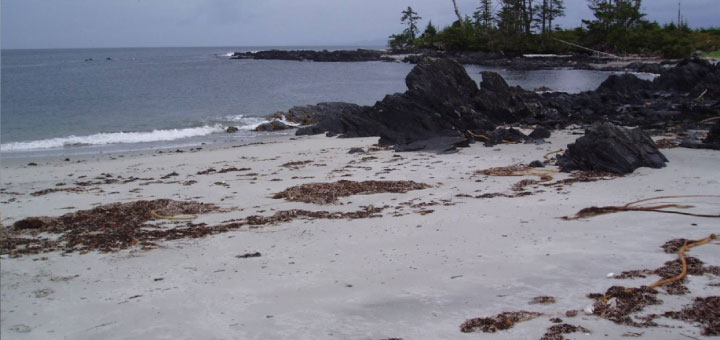
At first, Lynne seemed, if not keen, perhaps convincible. But her fondness for the idea diminished as we encountered many massive logs, reminding her that daylight visibility was indeed something of a bonus. Her creaking openness slammed shut as reports came in that logs were most everywhere and were wreaking havoc on vessels in the 2022 Race to Alaska.
My promise to sail slowly, while maybe heroically thrusting a light sabre beam from a flashlight into approaching seas every few minutes, didn’t have much affect. But, to be honest, I really did not want to spend a night hanging off the bow, staring into the murk for deadheads as we inched across the strait.
So, we joined most of the rest, aiming for Prince Rupert, motoring up the Inside Passage via Bella Bella and the long, monotonous Princess Royal and Grenville channels, arriving at Kumealon Inlet where we had to wait on anchor. We had overheard on the VHF that boaters were being turned away from Prince Rupert’s marinas and nearby anchorages were full. The suggested reason was a storm which was then tormenting the BC coast from Juan de Fuca Strait to Dixon Entrance. It was forcing vessels bound for Alaska and Haida Gwaii to extend their stay in Prince Rupert.
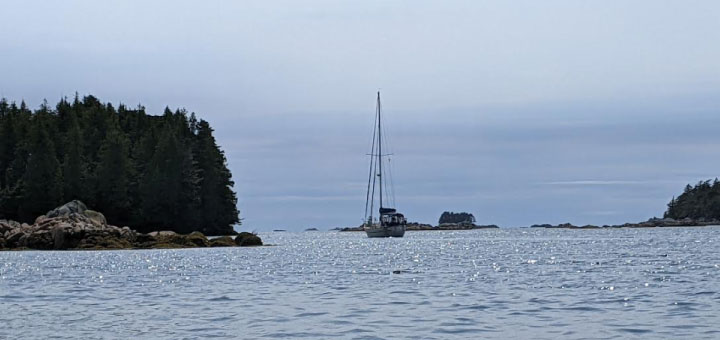
Using our inReach, since we had no cell connection at Kumealon Inlet, we asked my sister Anne back in Victoria to phone the marinas in Prince Rupert to see if we could squeeze in. We could, but not until the storm had passed, maybe in five days. Coincidentally, that was when a two-day window of settled weather in Hecate Strait promised a gentle crossing.
We decided to take advantage of the weather window, skipping Prince Rupert and making directly for Haida Gwaii via Griffith Harbour.
Griffith Harbour was recommended to us by friends, divers Matt and Jocelyn, who often used it as a jumping off point to Haida Gwaii while working winters in the north where they perform Geoduck clam surveys for Fisheries and Oceans Canada.
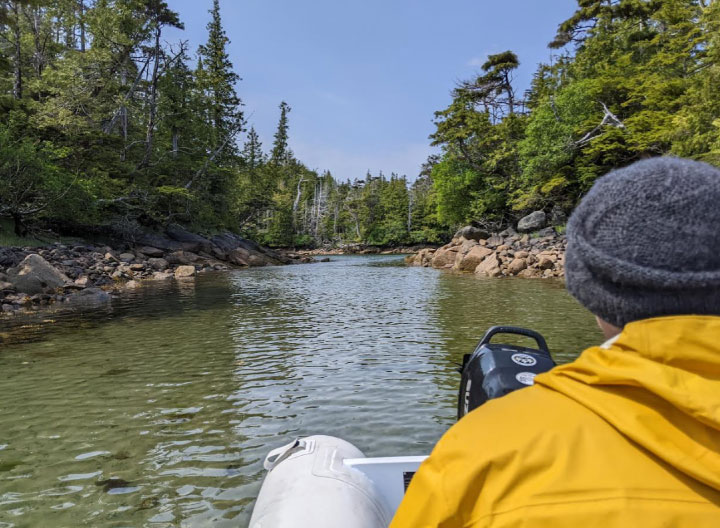
It is ideal, offering protection from most winds in moderate conditions, with many islets and channels that are fascinating to explore. Ashore in the anchorage is a wooden sign advertising the “Moresby Lounge”, perhaps a resting spot after returning from huge Moresby Island which dominates southern Haida Gwaii.
We crossed from there to Daajing Giids in Skidegate Inlet along the south shore of Graham Island. We perhaps chose a day with weather that was too settled, windless and needing to motorsail much of the way.
Returning a few weeks later, we left from Rose Harbour in the south, crossing to splendidly protected Bent Harbour, off Weeteeam Bay. This time we chose a day with a favourable wind and were able to sail at a decent pace over flat seas almost all the way.
There are horror stories told by those who crossed Hecate in foul weather when the shallow strait can turn into a tempest.
Don’t become a story. Take your time; wait for the right weather.
Stay safe.
Note: This article was originally published on SalishSeaPilot.com.
